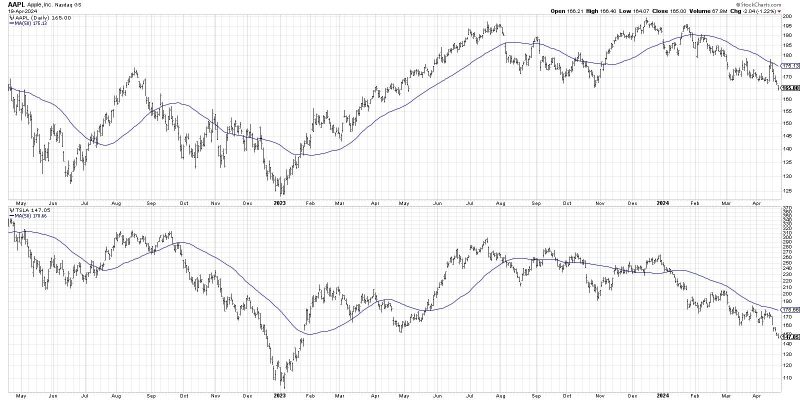Throughout the history of the stock market, there have been periods of intense growth followed by periods of significant decline. The recent breakdown in mega-cap growth stocks has left many investors concerned about the possibility of entering a bear phase.
Mega-cap growth stocks, which have been the darlings of the stock market in recent years, have started to show signs of weakness. Companies like Apple, Amazon, and Microsoft have experienced significant declines in their stock prices, leading many to believe that a bear phase could be on the horizon.
One of the reasons for the breakdown in mega-cap growth stocks is the increasing uncertainty surrounding the global economic outlook. Concerns over inflation, rising interest rates, and geopolitical tensions have all contributed to a sense of unease among investors. This uncertainty has prompted many to reevaluate their investment strategies and consider shifting their focus away from high-growth stocks.
In addition to these macroeconomic factors, individual companies within the mega-cap growth sector have also faced challenges. Tech giants like Facebook and Google have come under increased scrutiny from regulators, while companies like Tesla have struggled to meet production targets. These issues have all contributed to the overall weakness in the mega-cap growth sector.
As investors reassess their positions in mega-cap growth stocks, they are starting to look for alternatives that may provide better returns in a bear market. Some are turning to defensive sectors like utilities and consumer staples, which tend to perform well during economic downturns. Others are exploring opportunities in emerging markets or commodities, which may offer greater potential for growth in the current environment.
While the breakdown in mega-cap growth stocks may be cause for concern, it is important for investors to remember that the stock market is cyclical in nature. Just as periods of growth are followed by periods of decline, bear phases are typically followed by periods of recovery and renewed growth. By staying informed, diversifying their portfolios, and adopting a long-term perspective, investors can navigate the current market environment with confidence and resilience.

